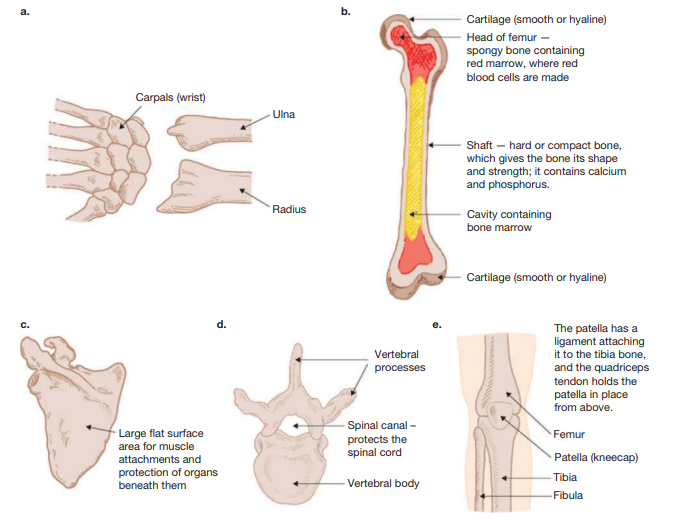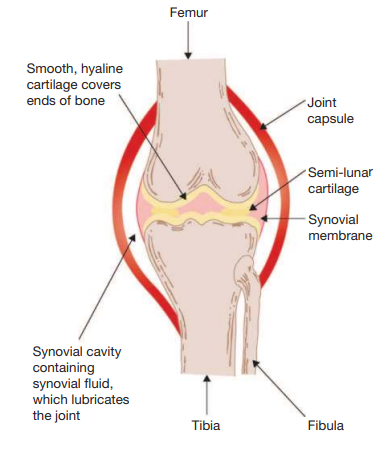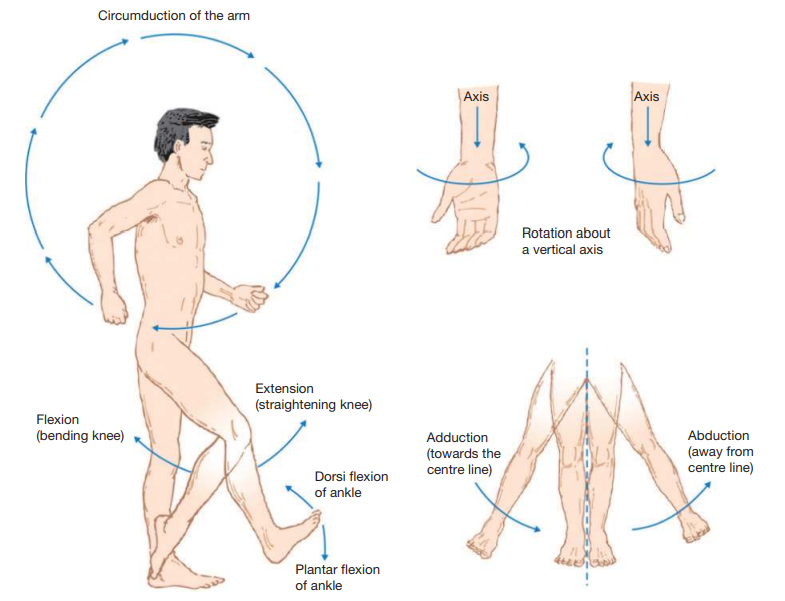Year 9 Term 1 HPE Notes
Week 1 - Skeletal System
Learning Goals for Week 1:
- Recognise and understand the four body systems most responsible for physical activity.
- Identify and recall the basic anatomy of the skeletal system.
Physical Activity:
Physical activity is any bodily movement performed by skeletal muscle at a substantial level above resting energy expenditure.
Four domains of physical activity: Leisure, occupation, transport, and house and yard.
The four main body systems used during physical activity include:
- Skeletal system: Bones
- Muscular system: Muscles
- Respiratory system: Lungs
- Cardiovascular system: Heart and blood vessels
Skeletal System Anatomy:
Bones are 50% water and 50% solid matter and are living as they grow, adapt and repair.
Bones provide the levers for movement during physical activity.
The skeletal system provides the framework of 206 bones and provides levers for movement.
Types of bones include:
- Long bones: Femur
- Short bones: Carpals
- Flat bones: Scapula
- Irregular bones: Vertebrae
- Sesamoid bones: Patella
Weeks 2 & 3 - Skeletal System
Learning Goal for Weeks 2 & 3:
- Recall and identify the basic anatomy of the skeletal system.
Skeletal System:


Week 4 - Types of Joints
Learning Goal for Week 4:
- Explain and analyse the functions of the skeletal system.
Types of Joints:
Joints: Occur when two or more bones meet or join together.
Synovial joints: Allow us to move and exercise with free movement in at least one direction.
Examples of joints are the knee, elbow, ankle, wrist, shoulder, fingers and toes.

Types of Synovial Joints:
| Type | Example | Anatomical Movements Possible |
|---|---|---|
| Hinge | Elbow, knee | Flexion and extension only |
| Ball & Socket | Hip, shoulder | Flexion, extension, adduction, abduction, some circumdution |
| Saddle | Thumb | Flexion, extension, adduction, abduction, some circumdution |
| Pivot | First two vertical vertebrae (i.e. atlas, axis) | Allow rotation only |
| Gliding | Carpals, Tarsals | Flat surfaces of bones allow some gliding movement |
| Condyloid | Wrist where carpals meet ulna and radius | Flexion, extension, sideways movement |
Anatomical Movements at Synovial Joints:

Week 6 - Muscular System
Learning Goals for Week 6:
- Recall and identify the basic anatomy of the muscular system.
- Explain and analyse the functions of the skeletal and muscular systems.
Basic Anatomy of Muscles:
Skeletal muscle is the muscle attached to bones and is responsible for all voluntary movements performed by the body.
Tendon: Cord made of tough tissue which connects muscle to bone.
A muscle fibre is a single muscle cell ranging in length from 1mm to 40mm.
The muscle fascicle is made up of hundreds of muscle fibres. A group of muscle fascicles bound together forms the whole muscle.
Types of Muscle Fibres:
Type 1 muscle fibres: Slow twitch fibres are small, red fibres that contract slowly but for long periods of time using oxygen.
Tye 2 muscle fibres: Fast twitch fibres are larger white fibres that contract quickly with lots of force to create fast and powerful movements.
The function of Skeletal Muscles:
The function of skeletal muscle: When a skeletal muscle contracts, it pulls on the attached bone to create movement. A muscle never pushes bone.
Reciprocal Inhibition: Skeletal muscles always work in pairs. When one muscle contracts to create movement at a joint, the other muscle relaxes to allow movement.
Antagonistic Pairs: The two muscles working together to create joint movements, Examples include biceps and triceps at the elbow joint, and quadriceps and hamstrings at the knee joint.
Agonist: The muscle doing the work by contracting.
Antagonist: The muscle not doing the work by relaxing.
Week 7 - Muscles
Learning Goals for Week 7:
- Explain and analyse the functions of the skeletal and muscular systems.
- Explain the effects of exercise on the muscular system.
Types of Muscle Contractions:
a) Isometric contraction occurs when the length of the muscle doesn’t change when contracting to apply a force. No movement.
b/c) Isotonic contraction occurs when the length of the muscle changes while applying a force.
b) Isotonic concentric contraction occurs when the length of the muscle shortens while applying a force.
c) Isotonic eccentric contraction occurs when the length of the muscle lengthens while applying a force.
Muscle During Exercise:
All skeletal muscles can have their strength, endurance or flexibility improved by implementing training principles to their exercise routine.
One noticeable effect when exercising muscle for the purpose of building strength is an increase in size.
Hypertrophy is the term used to describe muscle increasing in size.
Atrophy is the term used to describe muscle decreasing in size.
Type 1 muscle fibres: (Slow twitch) Are used for longer-duration activities of lower effort or force such as swimming, running or cycling continuously for 5 minutes or more. Some people are born with more slow twitch fibres.
Type 2 muscle fibres: (Fast twitch) Are used for power, speed and strength activities such as sprinting, jumping and throwing. These muscle fibres contract rapidly with speed and force. Some people are born with more fast-twitch fibres.
Training can increase the capabilities of your muscle fibres.